Last Saturday night, dozens of freshmen packed into a house on 36th Street for the first of the many parties that the men’s rugby team will host this year. Within the house were friends of the team and about fifty energetic rugby players, especially boisterous after enjoying an afternoon of violent sport. The testosterone-laden hosts introduced their guests to rugby chants and traditions, in a scene probably resembling Animal House more than anything the freshmen had seen in their short time on the Hilltop. In the end, freshman likely came away with an impression that Georgetown’s rugby players are all play and no work.
“There’s a house every year that’s the rugby house,” team president Matt Hammel (MSB ‘10) said. “There were some good old memories in that house that we got to relive a little bit on Saturday.”
Many of the revelers, however, probably weren’t aware why they were celebrating. Earlier that day, Georgetown rugby had defeated the University of Maryland 45-19 in their first match of the season. For the actual rugby players in attendance Saturday night, drinking and partying was just a well-deserved reward after a taxing day on the field.
The rugby team’s hard-partying reputation around campus may not be unjustified, but anyone who dismisses the team as Georgetown’s answer to a fraternity is mistaken. Perhaps the misconception comes from the fact that rugby at Georgetown, like at most schools, is a club sport. The name implies less commitment than a varsity sport, and many club teams are less competitive versions of varsity teams. But Georgetown’s rugby members are playing their sport at its highest level, and they are definitely athletes, as their performance Saturday made abundantly clear. They may act like frat brothers off the field, but when they play it becomes clear that their brotherly bonds are formed through scrums and rucks on the field.
“[We] take it as seriously as a varsity sport. We practice two hours a day, and kids go lift on their own time,” Matt Tully (COL ’10), who plays wing for the team, said. “As much fun as it is, we do take it seriously. We’re not out here to mess around; we want to win.”
That’s not just talk—the team’s dedication is apparent on the field. Georgetown has one of the top rugby programs in the region, if not the nation. Last year, the team advanced to the Division II national semifinals before falling to eventual champion Middlebury College. The team’s rise to prominence began with the arrival of head coach JP Perez in 2002. Georgetown has had a rugby team since 1967, but Perez made the team become a true powerhouse. The former coach at Gonzaga College High School here in D.C., Perez was recruited by a former player of his at Gonzaga to move up to the college level and take over a team that needed a strong leader.
“JP is Georgetown rugby. He’s the reason we have a program right now,” Assistant Coach Pat McKenna said. “Georgetown rugby is going to be good for a very, very long time because he laid the foundation correctly.”
Perez, like all rugby staff, works as a volunteer. But his love of the game brings him to the field every night for practice, and he endures the same long car rides to games that the players do.
“When you have a really good team who also enjoys the game you want to stay here and be a part of it,” Perez said.
Perez believes this year’s team has the potential to be as good, if not better, than last year’s squad. The club is only just beginning a long season, but the players know what their goal is.
“People have got [nationals] in the back of their heads. It’s in May; it’s a long way away, but I’m looking forward to that more than graduation,” team captain Phil Cooney (MSB ’10) said. “We’re serious about that this year.”
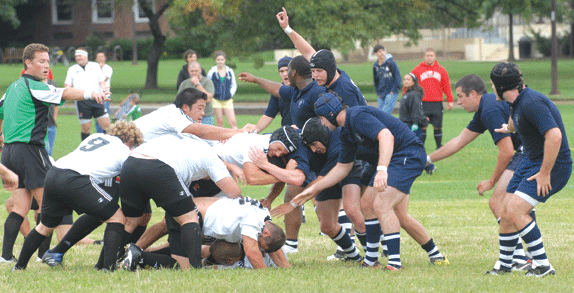
Come out of the scrum: After a stoppage in play, Georgetown ruggers line up against their Maryland counterparts in a fight for the ball.
Cooney, accused in fall 2007 of a hate crime in a case that was dropped in April 2008 for lack of evidence, is a consensus pick for one of the best players on the team. He does not resemble the hulking brute one might expect from an elite rugger, but watching him make a few crushing tackles makes it clear why his teammates look to him to lead the team back to nationals.
On Saturday, however, the team’s focus was squarely on Maryland. After caravanning to College Park in players’ cars and rented vans, the A side—rugby’s varsity equivalent—suited up and got on the field, chanting, yelling, and pumping themselves up for the contest. Soon the oblong rugby ball spun through the air, and the combatants settled in for 80 minutes of violent competition.
For the uninitiated, the action on the field looks like chaos. Even freshmen who have been practicing with the team for weeks are unsure of the nuances of the game, receiving lessons from their older teammates throughout the match.
“The first game I ever played my freshman year, I had zero idea what was going on. By halftime of the first game you pick it up,” said Hammel, nicknamed “Mammal” by his teammates for his muscular build.
Simply put, rugby is essentially the missing link between soccer and football. Fifteen players work in brutal unison to advance the ball against an unrelenting opponent. Every pass and kick is a calculated move designed to bring the team closer to a five-point try, a literal touchdown, where a player must ground the ball in the opponent’s goal area. The ball can only be advanced through kicks and running—passes must be thrown backwards. Defenders look to tackle the ball-carrier, but unlike in football, the play doesn’t stop when a player goes down. The tackled player must give up the ball, often leading to a fight for the ball, called a ruck.
Georgetown got off to a strong start on Saturday, scoring 17 unanswered points. Players on the bench were clearly invested in the game, erupting with each perceived slight by the official.
Inevitably, injury interrupted the game. About midway through the first half, Joe Angiuli (MSB ’12) was forced to head to the sideline when his shoulder was driven into the ground. But rugby players are nothing if not tough—after getting examined and treated, he was right back on the edge of the field, exhorting his teammates, who had to continue on without him.
The injury was fairly severe—he saw a doctor and will likely miss the next game—but Angiuli seemed unfazed. Such injuries are to be expected in rugby.
“I have 80 stitches right here, six right here, and eight right here,” he said, pointing out old wounds. “I’m pretty unlucky.”
Tully said that he and his teammates are well known at Georgetown Hospital.
Not many witness the bodily sacrifice the rugby players make for their team. At College Park there were not more than 100 spectators on hand, mostly in support of Maryland. Home games aren’t much better for Georgetown, with the team rarely playing on campus due to a lack of field space.
“We play all over the city. Sometimes we’ve had home games as far as Baltimore,” Cooney said.
The team may finally have a solution to that problem. Thanks to the new lights on Multi-Sport Field, rugby will play three true home games this fall, including this Saturday’s home opener against Virginia.
But even the sparse crowd at College Park did not prevent the game from getting loud. Among the few Georgetown supporters on hand was a group of dedicated recent alumni. The graduates had showed up, cans of Schlitz malt liquor in hand, to cheer on the squad and catch up with former teammates. They fell right back into their routine: encouraging the players on the field while relentlessly ribbing their buddies on the sideline. Clearly the bonds that players formed on the rugby team last well beyond their four years of partying and playing together.
For Mike Onyiego (SFS ’09), life in the rugby house never really ended. He moved away from campus, but still lives in D.C. with former rugby players. His former teammate John Fisher-Thompson (MSB ’09) moved on to a career in the Marines, but he comes up from Quantico to support the guys who he says share the same camaraderie he sees in the armed forces.
The former players all wished they could be out on the field. They had no problem articulating why they don’t want to leave rugby behind.
“Best choice of my life,” Joe Kemper (COL ’09) said of his time playing rugby. “I think it’s just awesome getting to live with my best friends and play a sport that I love with my best friends. The shenanigans that come about are pretty insurmountable.”
As serious as the team is about the sport, everyone talks about it’s shenanigans too. The team’s nonathletic exploits may lead to a certain debaucherous reputation, but the teammates have too much fun together to care.
Case in point are the team’s drink-ups. Though the name reinforces rugby’s supposed alcohol-infused ethos, the events are as much about team bonding as they are about booze. Every Thursday, the team gets together to sing traditional rugby songs, adding in imaginative verses about their fellow ruggers.
“People spend more time than they probably should thinking about these songs just to make fun of each other, and I think that’s a testament to how close we are,” Cooney said. “You can make fun of your brother all day long, and that’s what we are here, just a bunch of big goofy brothers.”
That band-of-brothers bond comes from spending nearly every moment together. Rugby players live together, upperclassmen in the rugby house and underclassmen in dorm rooms next to one another. They practice together four nights a week and then party together on the weekends. The team even had a group trip to Medieval Times last year. Being on the rugby team is the kind of all-encompassing lifestyle one expects from a fraternity.
“I’d say with Georgetown’s lack of fraternities, we’re one of a couple clubs that would be the closest that you get to that,” Brock Magruder (COL ’10), the team’s social chair, said. “But what’s different for us from a fraternity is that we have a common goal besides just the social aspect, and one that we’re good at too.”
Last Saturday, the players got excited for one of their more frat-like traditions. Two players scored their first A side tries, placing them in line to become “Zulu warriors” at the next party.
“Zulu warrior is a tradition throughout most of the collegiate level in rugby,” Tully said. “It’s kind of a rite of passage after scoring your first time on A side.”
“The guy will run naked through the party,” Cooney clarified.
There’s more to the team than just jokes and pranks. Every year the team participates in Run for Rigby and Rigby Ball, held in memory of Dan Rigby (MSB ’05), a rugby player who died in an off-campus house fire during the fall of his senior year. The event was organized by Rigby’s former teammates, and even though no current members played with Rigby, the team remains involved in the fundraisers. The team practiced more lighthearted charity last year when they christened November “Mo-vember” and grew out mustaches to benefit prostate cancer research. Players found sponsors for their grow-athon, raising $3,000 for the cause.
These are the kind of experiences players don’t forget once they graduate. After forty years, Georgetown rugby has an extensive and active alumni network. Many return every November for the annual alumni game to play the sport they fell in love with in college.
Alumni support also comes to good use when rugby comes face to face with the financial limitations of being a club sport at Georgetown.
“It’s a tough situation, because we have fifty guys on a team and we get the same budget as club basketball,” says team treasurer Brian Litwak (MSB ’10). “The school doesn’t really understand why you need certain stuff, so we feel we get less in our budget than we should.”
Money was certainly a concern last semester when the team needed to travel to Florida and California for the national playoffs. Fortunately, the players could count on the alumni. (Clonazepam)
“Even when guys graduate they still identify with Georgetown rugby,” Litwak says. “We needed twenty grand [for nationals], and we raised twenty grand in two weeks pretty much all through parent and alumni support.”
The team is already thinking about reaching out to the alumni again after taking down Maryland. After the match, the A side cooled down, sharing the Schlitz and socializing, and the B players took the field for a second, more chaotic match. But with the win on the books, the team can relax and ease back into social mode. Soon enough the team piled back into the rental cars and headed home to Georgetown, nursing their wounds, and preparing to open this year’s rugby house to the crowds.
Georgetown students who made their first pilgrimage to 36th Street received an alcohol-soaked first impression of the rugby team, and perhaps an indelible memory of a Zulu warrior streaking by.
At least one former rugger has come to terms with the team’s reputation.
“People make fun of us for looking like assholes,” Onyiego said. “But we’re always having fun.”



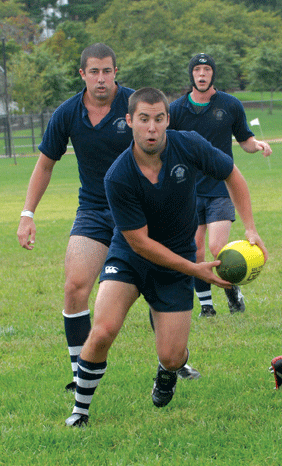
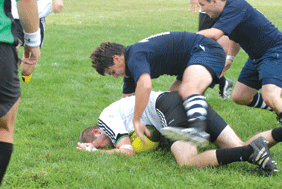

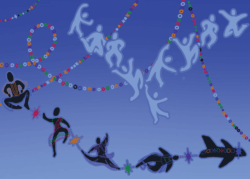

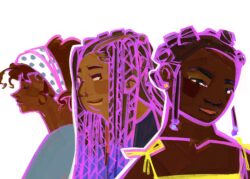
Pat – are you serious?
rugby is the best sport ever!!!!!!!!!!!!!
it is one of my favorite sports to play.
Love the socks, anyway.
Glad JP gets some recognition from the school finally. I’m very jealous about the lights on Harbin.
Pooney, you are retarded for spelling out to the entire community what a Zulu run is.
Good article and great club. Keep up the grand tradition!
-Len Natoli
GURFC V.P. 1971
How could anyone write a rugby article without the words “rugger hugger,” “shoot the boot” or “anal chug” anywhere in the piece?